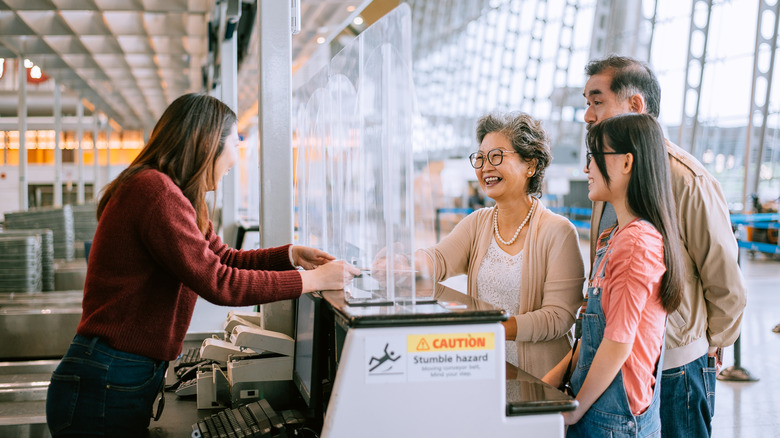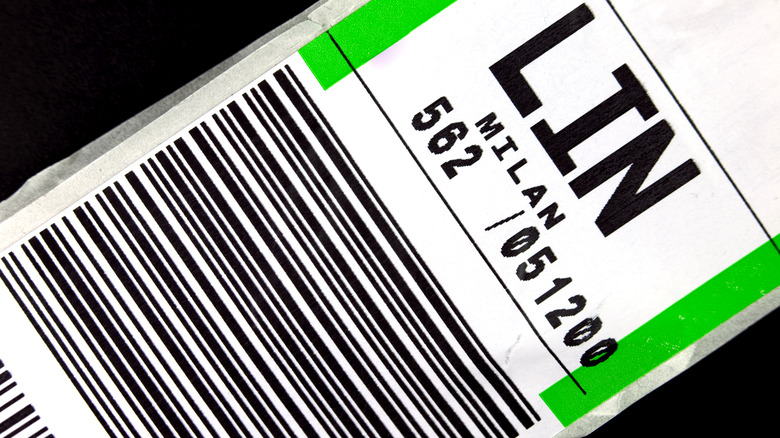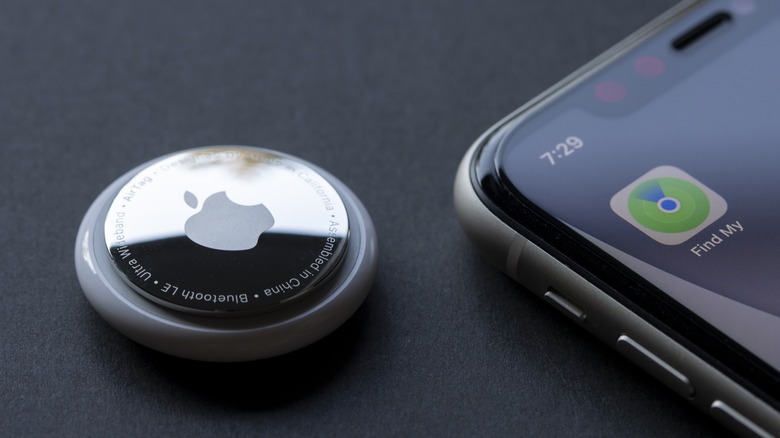The One Thing You Should Do Before Checking Your Luggage
It might sound like a no-brainer, but when you fly somewhere, be sure that any tags on your checked luggage are up to date with your current information. This applies to your address (or better yet, just your phone number and hotel address) in case your luggage gets lost, and more importantly, it applies to your flight information. You'd be surprised how easy it is for people in a hurry to forget about the second one.
When you check your luggage before your first departure, of course, the airline staff will usually put new baggage claim tags on it for you, and they may even recommend that you remove the ones from previous trips if you've left them on there. The flip side of that is if you're doing self-check-in or making a return trip, but you have old tags from when you were flying the opposite direction or another place still attached. This could throw off the baggage sorting system or the baggage handlers while they're working fast, and potentially land your suitcase in the wrong place.
For that reason, a tech company executive specializing in luggage loss prevention told The Sun: "Before checking in your bags, remove any old baggage tags or stickers from previous trips. This reduces the chances of confusion and ensures that the correct destination information is displayed on your luggage."
Remove old baggage claim tags and pack responsibly
Putting decorative travel stickers on your suitcase to remember all the different places you've visited is one thing, but you don't want to be collecting a bunch of baggage claim tags. If your checked luggage misses its flight or ends up in the wrong destination, you want to make it as easy as possible for someone handling it to see where it was supposed to be headed. This is why it's important to remove old, used baggage claim tags and only display the most recent ones with your current destination on it.
Other tips for reducing the likelihood of lost luggage (and all the stress, worry, and hassle it can bring) include confirming that the tag corresponds to your flight ticket information and just being responsible about the way you pack. This means bearing in mind when you pack that, despite everyone's best efforts, mistakes and mishaps occur, and your checked bag still could be lost or mishandled somehow.
A heavy-duty suitcase with things cushioned or covered inside can help lessen the risk of something you own getting damaged in transit. Keeping anything of crucial value, like your passport or money, in your carry-on bag with you, will also leave you better prepared to deal with a situation where your luggage might be delayed or lost. Having a suitcase with a unique design or identifier on it (as opposed to just a plain black one) can also help prevent mix-ups.
Use smart tags and just be smart with your address
In addition to taking off old baggage claim tags, modern travelers can also utilize the tool of smart tags, which make it feasible to track your luggage electronically. One such tag or tracker is Apple's AirTag, which works much in the same way as the "Find My" app would if you lost your iPhone or other Apple device. Instead of relying on the airline to keep track of your bags, you can take matters into your own hands and maybe even help them find your lost bags quicker.
As far as the old habit of writing your address on a luggage tag goes, it's debatable whether you should really do that with your home address. Some recommend against it, as anyone could read the address and find out where you live, and maybe carry out a burglary there while you're off on vacation. Think: "Home Alone," but with no Macaulay Culkin to defend your house with booby traps.
In place of your home address, you can put other contact information like your current phone number or the address of the hotel where you'll be staying when you reach your flight destination. Above all else, though, just remember to take off those old baggage claim tags when you're flying.


